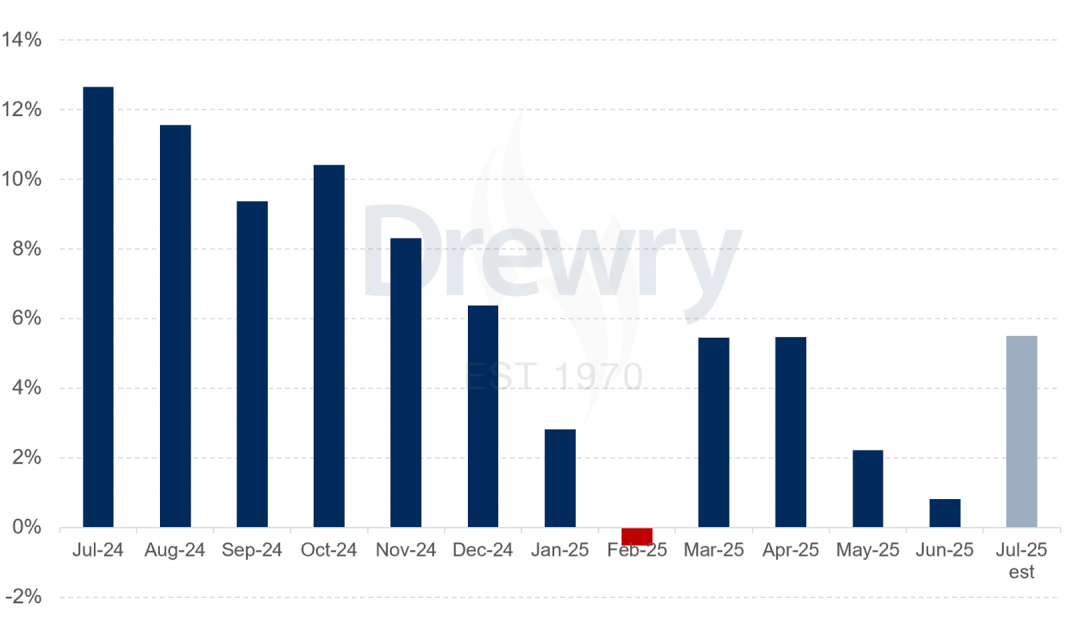After a robust 11.4% growth in 2024, the global airfreight market has experienced significant month-to-month volatility in 2025, according to a new analysis from Drewry Supply Chain. The report, authored by airfreight analyst Tom Crabtree, reveals a landscape marked by wavering demand, trade policy uncertainty, and a noticeable re-routing of cargo away from direct routes to the United States.
According to Crabtree, world airfreight traffic, measured in cargo tonne-kilometres (CTK), saw minimal growth of just 0.8% year-over-year (YoY) in June 2025. This followed a period of wild vacillation between slight contraction and mid-single-digit percentage growth. Preliminary data for July, however, indicates a rebound, with traffic growth estimated to be between 5% and 6% YoY.
The analysis highlights that while e-commerce and sea-air traffic via South Asia and the Middle East were key drivers in 2024, a “pall of uncertainty and volatility” has settled over freight markets since the start of 2025. This is largely attributed to changing regulations and tariff deadlines from the US presidential administration, which have prompted shippers to “front load” shipments one month and then reverse course the next.
This uncertainty is particularly evident in the Far East-North America trade lane, the largest international air cargo market, which contracted 4.8% YoY in June. This deceleration was driven by falling demand for chartered widebody freighters on the eastbound route.
Conversely, other major trade lanes have seen strong growth, suggesting a strategic re-routing of cargo. The Europe-Far East, Europe-North America, and intra-Far East lanes grew by 8.9%, 8.4%, and 7.2% respectively in the first half of 2025 compared to the same period in 2024. Crabtree noted that this growth was likely fueled by shippers coping with evolving US trade policies, “front-loading” from Europe, and a pivot of Chinese exporters toward European markets.
The report also details other key factors influencing the market:
- Middle East Carrier Impact: Middle East carriers were negatively affected by airspace closures stemming from the Israel/US-Iran airstrike exchanges in June.
- Decline in US-bound E-commerce: The impact of restrictions on low-value “de minimis” e-commerce shipments from China to the US, which began in early May, became more apparent in June.
- Sea-Air Traffic Decline: The Europe-Middle East air trade lane, which grew 26% in 2024 due to rerouted containerships avoiding the Cape of Good Hope, fell 4.5% YoY in June as shippers found lower-cost alternatives.
In terms of capacity, world airfreight capacity (ACTK) grew at roughly double the rate of traffic, expanding 1.7% YoY in June. International capacity grew even faster at 2.8% YoY. Notably, North American airline capacity saw a sharper contraction of 5.1% YoY in June, following a 3.5% fall in May. Passenger lower hold (“belly”) capacity grew 4.8% on international routes, while freighter capacity grew only 0.4% year-on-year.




